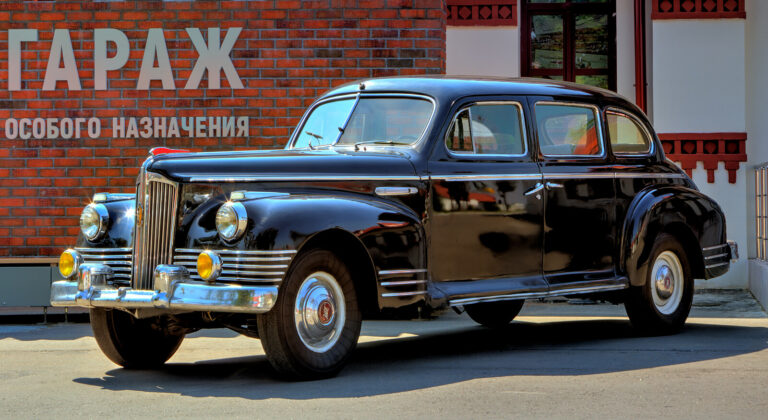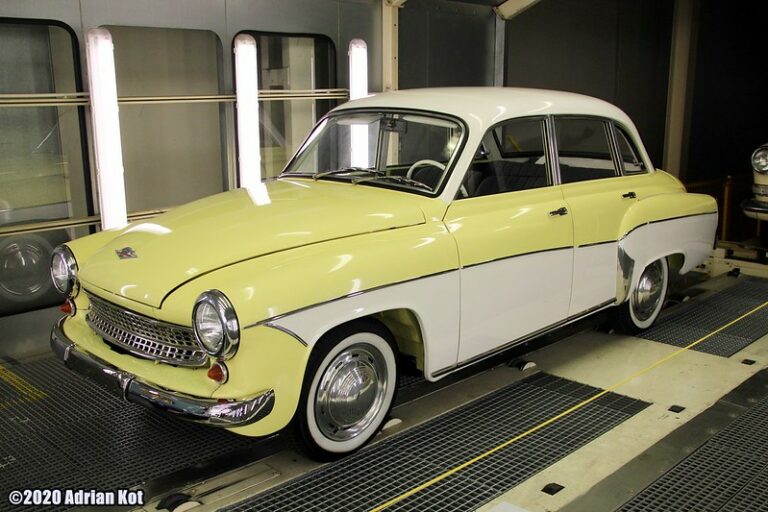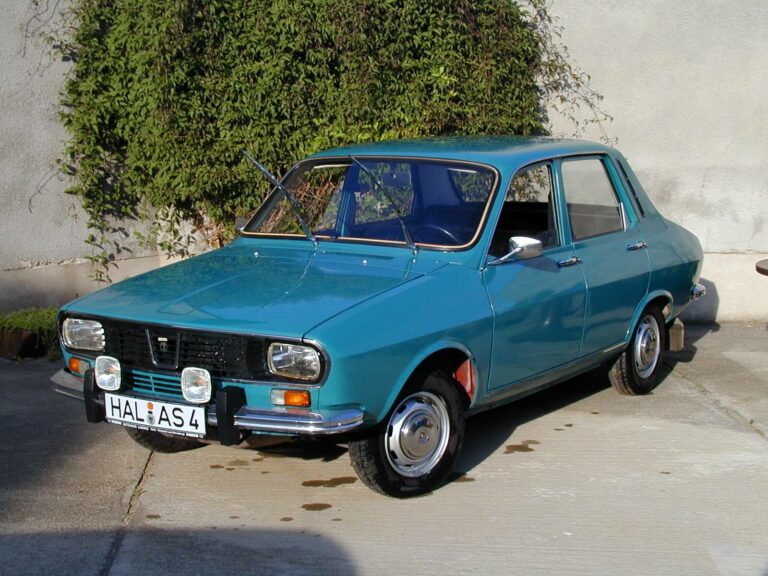1978 - The great Zaporozhetsek revision - 2
The magazine Autó-Motor is from July 1977, January 1978 and a three-part article on the same subject, ZK-91-08 in the November 1979 issues of Zaporozsec 968A from the pen of the owner, Otto Nagy. The author of the articles reports on the use and usability of the car, from the first drive through to the car's almost two years of age, sometimes in a funny, sometimes in a more serious, but always informative way.
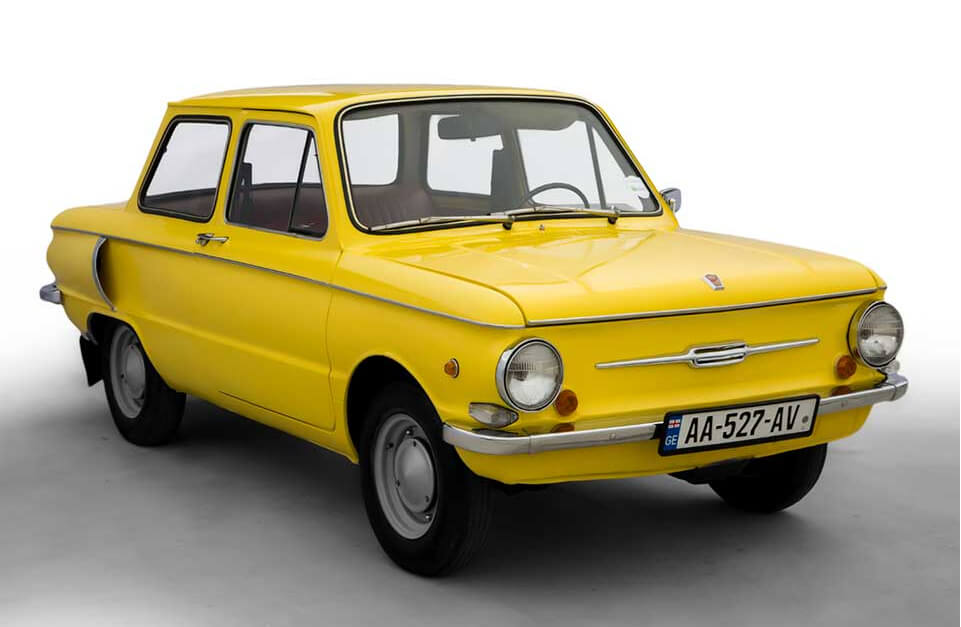
Image source: automuseum.ge
The ZAZ-968 and its variants in the article were produced between 1971 and 1980. The engine was the same 40 HP (30 kW ; 41 HP ) 1197 cc MeMZ-968 V4 as the first ZAZ-966 model, but the exterior of the car was slightly modernized. The most noticeable change was the replacement of the fake chrome grille on the front of the car with a horizontal chrome trim. The previously rather puritanical dashboard is now made of plastic and the car has been given better front brakes. Production of the ZAZ-968 was discontinued in 1978 (since 1973 it had been produced in parallel with the newer 968A - mentioned in this article).
Below is the second transcript of the article series, published in January 1978:
♠

Some post-entry experiences
Last year, in AM 14, I wrote that you can only really make friends with a new car after you've had a chance to get used to it, and we've both learned to "behave". The new ZAZ - which was the one we were talking about at the time - is slowly getting old; we've done our first "ten thousand" and had some pleasant and unpleasant experiences together.
Let's start with the worst, all the more so because I want others and more people to learn from my individual case.
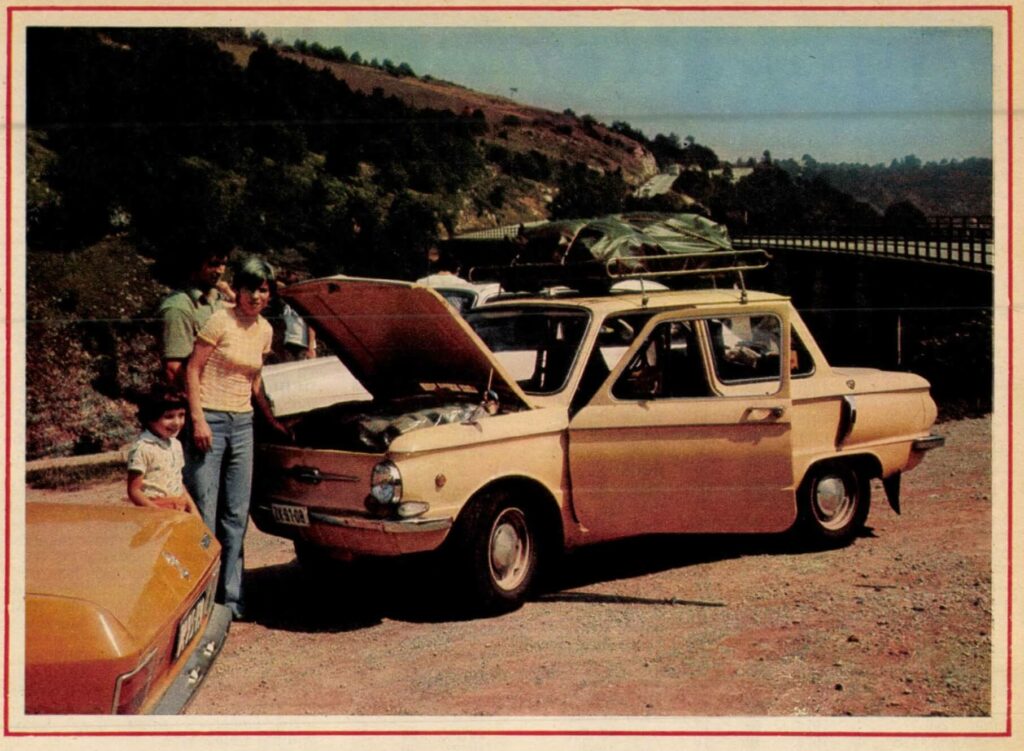
On a bright summer morning, head for the well-known and popular Balaton resort. On the way home from a pleasant trip, the engine suddenly revs and stops.
I get out, I'm gasping. The engine starts up again, but the sound is overpowering.
A few minutes to the first stop for the yellow angel. I'll get there at a snail's pace somehow.
- Sir, not another step! Either the crankshaft is "stuck" or one of the cranks has come loose. It's in need of a tow," is the not very encouraging diagnosis.
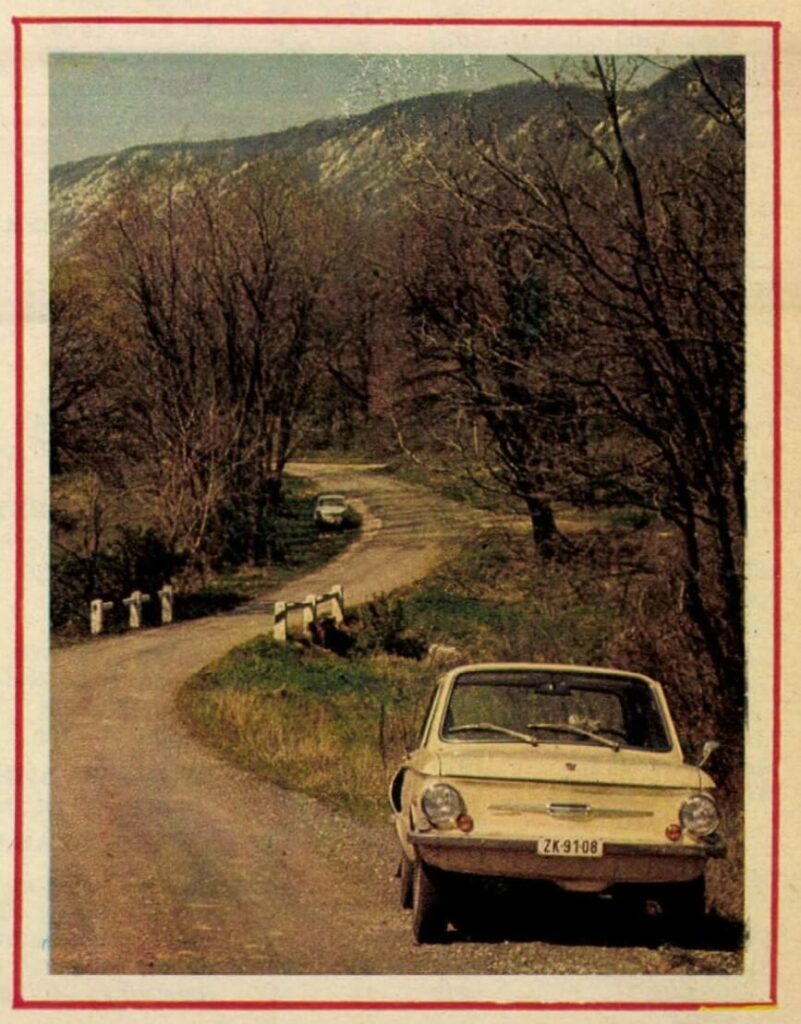
It's Sunday evening, where should I take the car (and with whom)? I decide to leave it at the petrol station and on Sunday morning, I contact the garage in a nearby town for warranty work.
The crossbar switches on immediately, but the towing is not covered by the service, and there are no spare parts for this "rare" type.
After much despair, the new idea: maybe the designated brand service here in Pest can help?! It will, if I bring the car up.
A few more downbeat phone calls, then I go straight to the big Trust Customer Service. I'm greeted with goodwill and helpfulness, and soon I'm told that the car is ready to be picked up at the service station in the country.
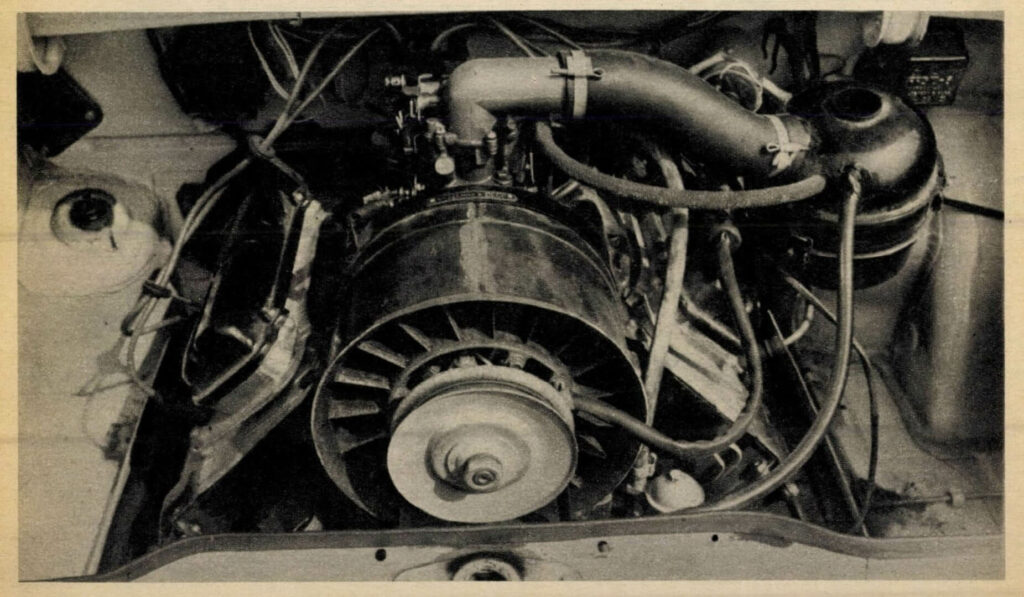
I'll go down and get it.
But at the outskirts of Budapest, the engine revs up and everything starts all over again. Later, the brand service finds out that the crankshaft bearings can only be reassembled like this by a "country" service... Anyway, the car is ready and everything is really fine. Unfortunately, the crankshaft and its bearings were factory defective. This can happen with any brand, but the difficulties associated with this event are more of a "domestic" issue.
Since then, I have driven over five thousand kilometres with it, and as they say: we are getting to know each other!
I have visited the mountains of our country, known and less known places of excursions. I'm over two thousand kilometres into Yugoslavia, and I can say without bragging: despite everything, I don't regret having chosen this type of bike.
On our tour abroad, the car with four people and the luggage in the roof rack, plus the not oversized but all the protection items in the closed trunk, i.e. one and a half kilos, managed the notoriously high Yugoslavian mountains very well.
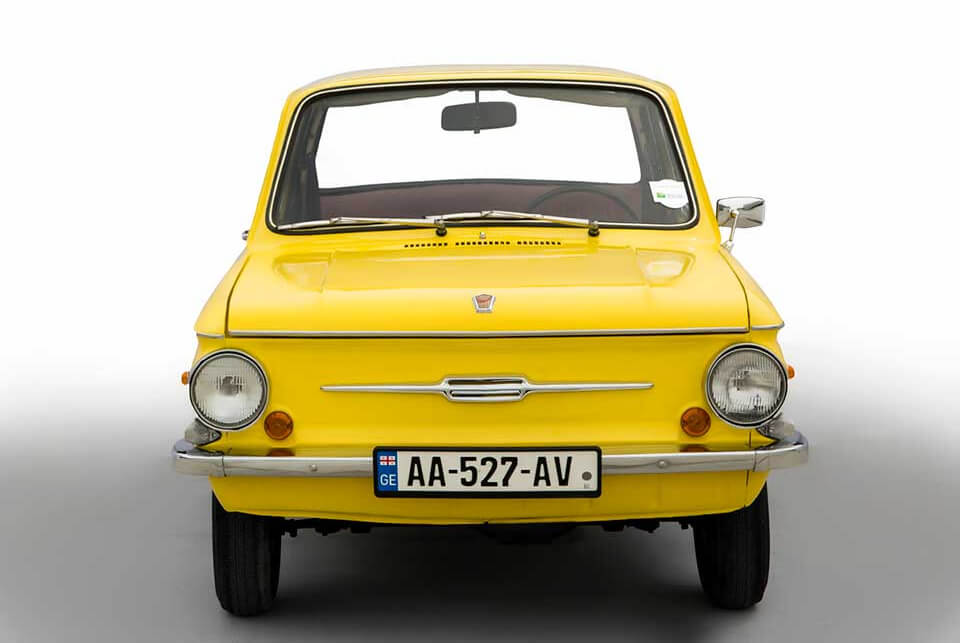
Image source: automuseum.ge
Since the crankshaft change, I've noticed some oil consumption, but I suppose that's both natural and because the running-in period has only just ended. And this consumption is no more than 1.5 deci of oil at 2000 km.
However, I am definitely satisfied with the acceleration of the car. I recently received a 1974 Zaporozhe from a colleague to test drive. Experimentally comparing the acceleration of the two cars, there was a surprising improvement and a great deal of dynamism in favour of the new ZAZ.
This difference was also apparent when testing the top speed on the road: while I didn't dare to approach the factory speed with the 74, I was able to reach the speed limit of 115-120 km/h with mine, with power to spare.
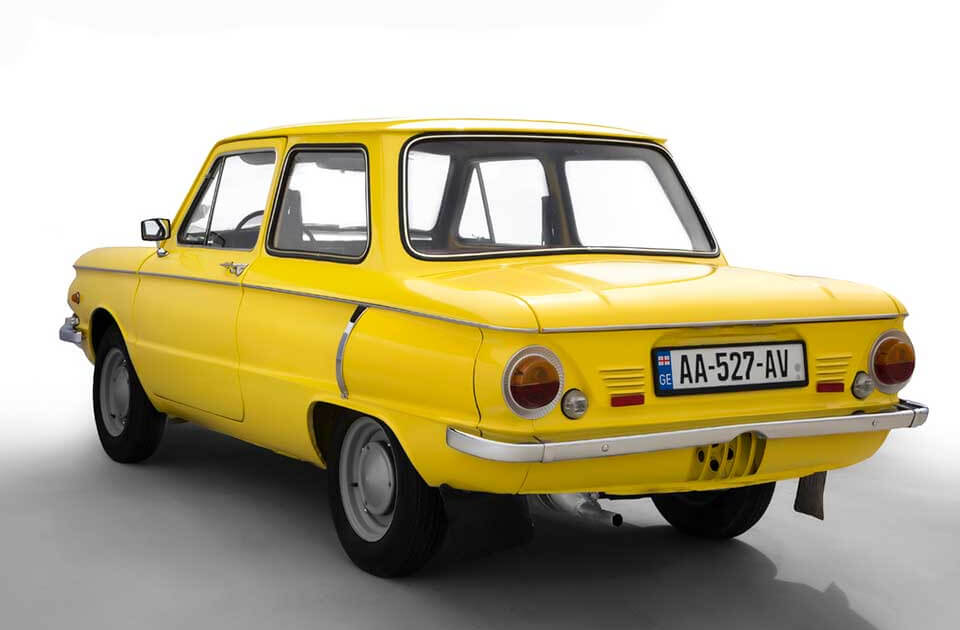
Image source: automuseum.ge
Many people have asked me: how much can I travel with it? My answer is simple: always as much as road conditions, traffic safety and reason dictate. On a good road, in light traffic, without disturbing others or forcing them to slow down, I have always been able to keep up with the "big ones" between 60 and 120. With the new ZAZ, accelerating from a standstill is no problem either: it jumps nimbly out of the way at the green light.
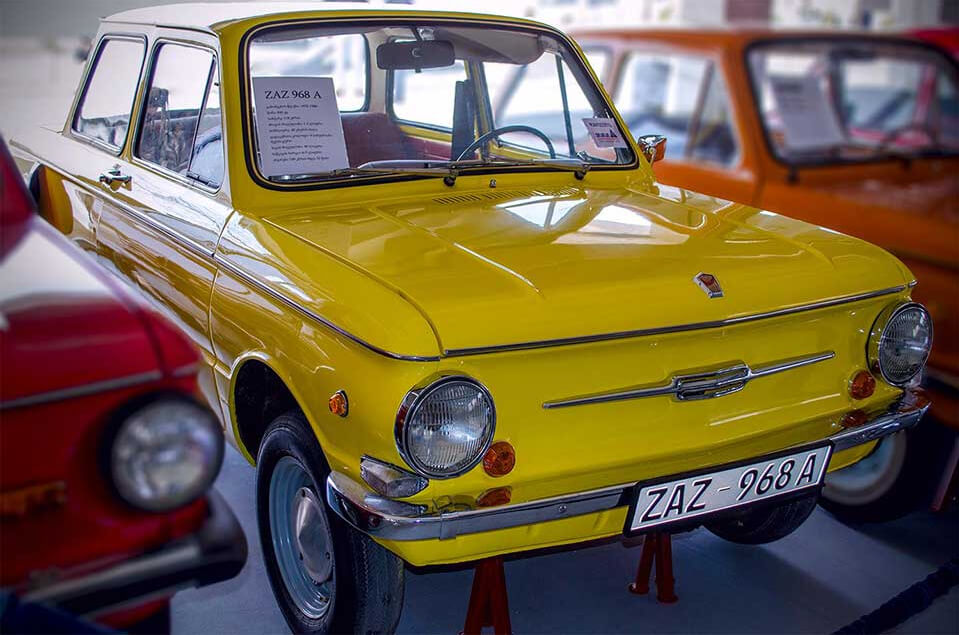
Image source: automuseum.ge
I know, 10-12 thousand kilometres is not a lot. But it's enough to get used to a car, to get used to it, to get to like it. Unfortunately, I can't deny that the bad "taste in the mouth" of this sometimes pleasant, sometimes unpleasant first ten thousand years was not primarily due to the car's perceived merits or weaknesses. The problem always arises for a ZAZ owner when he wants to assert his elementary need for spare parts, his need for servicing or his prestige as a car owner - for example on public roads - at a normal level. But this need goes beyond the valuation and value of a brand.
N. 0.
Editor's note:
The ZAZ 968/A, whose fate has been followed by our editorial team since the first kilometres, had just reached 12,000 units when we sent these lines to the printers in December last year. The car's owner has been keeping records since January 1977. The average fuel consumption, including the winter heating period, is 9.2 litres per 100 km. And mountain roads must also be taken into account, as the ZK-91-08, which is under a lot of strain, has often been used on them, both in this country and in Yugoslavia.
